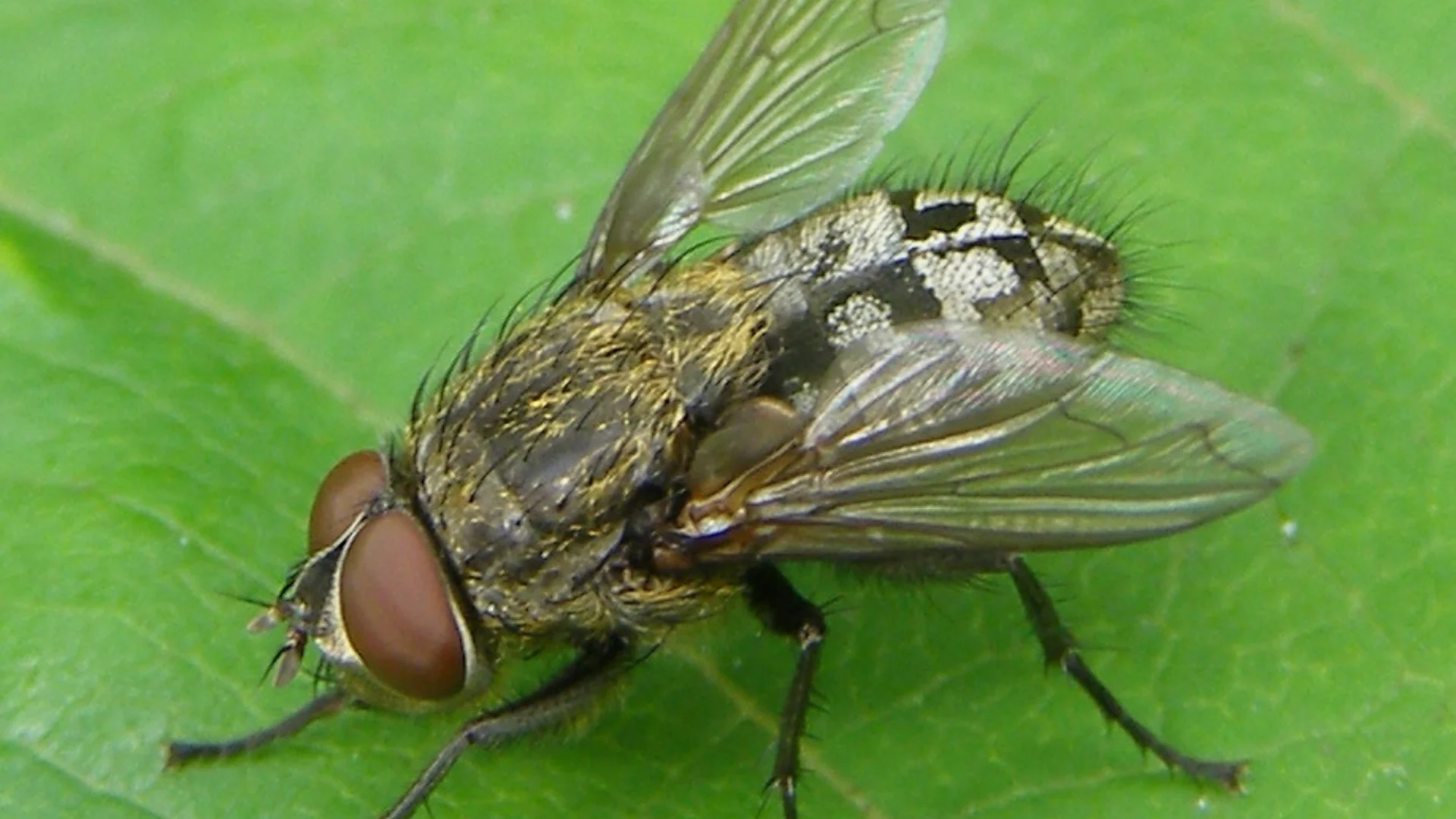
Meet the fly that emits an odour, leaves stains, and clusters in homes in fall
Cluster flies are mostly harmless, but if they're creating a commotion in your home there are ways to get rid of them.
As temperatures drop in the fall, you may notice an influx of critters in your home. These temporary invaders hope to ride out winter inside, away from the cold.
Most are harmless and can be ignored, provided they aren't bothering you.
One group you may notice buzzing around goes by the name "cluster flies," and they can be hard to miss due to their tendency to gather in groups after letting themselves inside, as the name suggests.
When disturbed, they will occasionally emit a faint, slightly sweet odour.
Identifying a cluster fly

House flies, blow flies, face flies, and cluster flies have different characteristics. {Graphic created by Cheryl Santa Maria. Images: Wikipedia (1, 2, 3, 4)}
Cluster flies typically measure 8 to 10 mm long, have dark grey with black and silver checkered abdomens, and have golden hairs on their upper bodies (although older flies may not have these).
SEE ALSO: Meet the destructive invasive species trying to get in your home this fall
Unlike their more common cousins, house flies, cluster flies have wings overlapping at rest.
At first glance they may be mistaken for house flies, but cluster flies tend to be more leisurely, flying at a slower, less frantic pace.
Homes surrounded by expansive lawns or bordering open parks tend to be their most common target.
DON'T MISS: Winter is coming — it’s time to mouse-proof your home
Other common intruders
Apart from cluster flies, homeowners may also encounter:
Face flies: These flies usually hover around cattle but can hibernate in homes. Their behaviour closely resembles that of cluster flies. Face flies will likely invade farm homes or houses near pastures and cattle as their larvae develop in fresh cattle manure.
Blow flies: Also known as blue or green bottle flies, these robust insects with metallic bodies often find their way into homes during winter and early spring. They develop in manure or deceased animal carcasses and are strong fliers drawn to lamps and lights.
Cluster flies tend to hibernate in concealed areas of houses, such as wall voids, attics, closets, and empty rooms, and they can leave greasy stains on walls and curtains when squashed.
When cluster flies die inside walls, they can attract larder beetles, which could migrate to other house areas.
RELATED: Some lady beetles bite. Here's how to tell which ones
Managing cluster flies
Steps homeowners can take to prevent a cluster fly infestations include:
Protective measures:
Ensuring that all screens fit securely without cracks or holes.
Using weather stripping on windows and doors.
Sealing cracks or crevices with caulking around doors, window frames, and other openings.
Installing insect screens over air vents.
Physical controls: While a fly squatter can be used, remember that cluster flies can release an unpleasant odour and leave stains behind when squashed. Vacuuming them can also cause them to release an odour, so make sure to empty your vacuum promptly if going this route.
Approved pesticides: In severe infestations, pesticide products are available in hardware or grocery stores and garden centers. Interior applications can target window and door frames, baseboards, floor coverings, underneath furniture, closets, and crevices.











